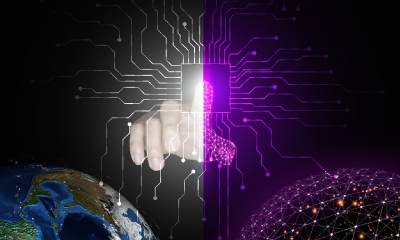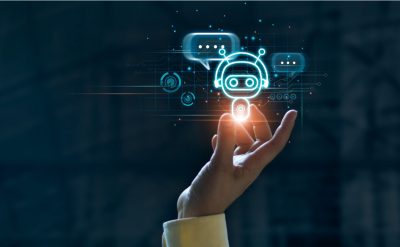Highlights:
- ChatGPT is the latest tool in auto text-generative AIs but is not free from errors or limitations. ChatGPT admits that sometimes it writes incorrect or nonsensical responses.
- ChatGPT is identical to InstructGPT, which is trained to follow orders in a prompt and furnishes a detailed answer.
The world of technology is obsessed with a new thing-ChatGPT. It was released on November 30, 2022 by OpenAI of San Francisco. Interestingly, ChatGPT already had more than one million users on December 4, 2022, and many more will join soon. The service will be accessible initially, intending to monetize in upcoming times.
There are some fiction, some actualities, and many more guessworks about ChatGPT being discussed by technology veterans and enthusiasts. We, as a user, need to carefully look towards its functionalities to boost our business in such competitive times. Are you interested in learning more? You’ve arrived at the correct place. This page explains what ChatGPT is, how it works, and more.
A Look Into What is ChatGPT?
Elon Musk founded OpenAI, an independent research platform, and developed ChatGPT. It is a sophisticated conversational chatbot. ChatGPT is a Generative Pre-Trained Transformer capable of understanding human speech and provides detailed answers that humans quickly understand.
The best part is that this artificial intelligence bot uses a question-answers format in ChatGPT, making it more live or human-like. ChatGPT is optimized for various language generation tasks, including translation, summarization, text completion, question responding, and even human diction. Users can feed in their query, and OpenAI chatGPT answers in a below manner:
- Answers with follow-up questions
- Challenge incorrect premises
- Admits the mistakes
- Rejects unsuitable requests
According to the makers, the above functionalities can be seen only in OpenAI’s ChatGPT and not other artificial intelligence chatbots. Besides question answering, it has been structured well enough for several language generation tasks, like summarization, text completion, and language translation.
Let’s discuss some interesting facts about ChatGPT
Meetanshi said ChatGPT users surpassed 57 million in January 2023 and exceeded 100 million in February 2023. The adoption rate was unprecedented in the history of the technology industry. This phenomenal growth is due to enormous word-of-mouth advertising! Therefore let us further dig deeper into other exciting facts on the same.
Here are some interesting facts about ChatGPT:
- It is one of the most significant language models, with over 175 billion parameters.
- ChatGPT can multitask; due to its advanced functioning, it can do multiple functions like translation, answering questions, and summarization.
- As its name highlights, it is a pre-trained model. Its program has a “set it and forget it” function, meaning that all the work required to make it operate has already been completed.
- ChatGPT is safe for confidential information, like trade secrets or personal data. According to OpenAI, it takes its users’ security very critically and employs stricter measures regarding privacy issues. Additionally, OpenAI furnishes users with control over their valuable data, permitting them to manage and delete the data as they need.
- ChatGPT is not only for big businesses or organizations but also accessible to individuals or small businesses, having the capacity to revolutionize a vast range of industries. OpenAI provides a free API that can be used by any person or body to merge ChatGPT into their applications. We need to check just the ChatGPT website.
The first process includes analyzing publicly available text, whatever has been found online. To formulate sentences systematically, the language model uses the reward model to prove right and wrong. The intuition is created using human AI trainers that talk directly with the language model. Then come to a process of compiling responses to a given question and comparing it to the AI-generated answer. When more and more AI responses are sampled, more human trainers rank themselves based on correctness. Finally, this data helps ChatGPT to fine-tune its language model through Proximal Policy Optimization.
Reinforcement Learning from Human Feedback (RLHF), which ChatGPT utilizes to make improved decisions, was described in a paper published by OpenAI in 2022, which is the most credible source to date on how ChatGPT operates. Lets’s discuss step by step:
Step 1: Supervised Fine-tuned Model
The first stage involves fine-tuning the GPT-3 model with the help of 40 contractors to create a supervised training dataset in which each input has a corresponding output from which the model can learn. These inputs were collected from genuine user entries made through the Open API. The labelers then wrote a suitable response to the prompt, thus building a known output for each input. After that, GPT-3 model was fine-tuned using the latest supervised dataset to make GPT 3.5 or SFT Model.
To multiply diversity in the inputs dataset, only 200 prompts could come from any given user ID, and any prompts that shared lengthy common prefixes were avoided. At last, all prompts consisting of personally identifiable information (PII) were avoided.
After aggregating all such inputs from the OpenAI API, Labelers were tasked with developing example prompts to populate categories with minimal sample data. The categories of interest consist of below inputs or prompts:
- Plain prompts: Any random ask.
- Few-shot Prompts: Any instruction that contains several query/response pairs.
- User-based prompts: Any specific use case requested for the OpenAI API.
The OpenAI API prompts and labelers counts as 13,000 input/output samples for the supervised model.
Step 2: Reward Model:
After the SFT model in step 1, it generates better relevant responses to user prompts. The next refinement involves training a reward model, where the model input is a sequence of replies and prompts and the output is a scalar the quantity known as a reward. The reward model is needed to leverage Reinforcement Learning, in which a model learns to furnish outcomes to increase its rewards.
To train the reward model, labelers are given 4 to 9 SFT model outputs for a single input prompt. They are asked to rank these outputs from best to bad, building combinations of output ranking. This valuable data is then used to train the reward model.
Step 3: Reinforcement Learning Model
Here a new prompt is sampled from the dataset, which generates an output. Then, the reward model calculates the reward for the output. The reward is then used to update the policy using Proximal Policy Optimization (PPO).
A model is trained using human feedback, a machine-learning type that concentrates on training models to make effective decisions. As it involves human input in the learning process, it improves the model’s performance.
In this approach, the model is trained by using predetermined preferences and biases of the human users leading to better performances, and it can be time-consuming or expensive.
This is how ChatGPT works, but its explainer sometimes honestly mentions that “currently, there is no source of truth.” They note that if the language model is too cautious, it will simply decline questions it cannot answer.
Bottom line
ChatGPT is an effective AI program highlighting another natural language processing step. From the translation of language to research, ChatGPT has several uses. As we all use Google to search for answers to our daily queries, we can use ChatGPT for the same task. Interestingly, unlike Google Search, it generates human-like outputs after analyzing the human input. Besides the model being flooded with new technology, it has some loopholes too. So, as a user, you must always cross-check and be ready with the ChatGPT alternative.













